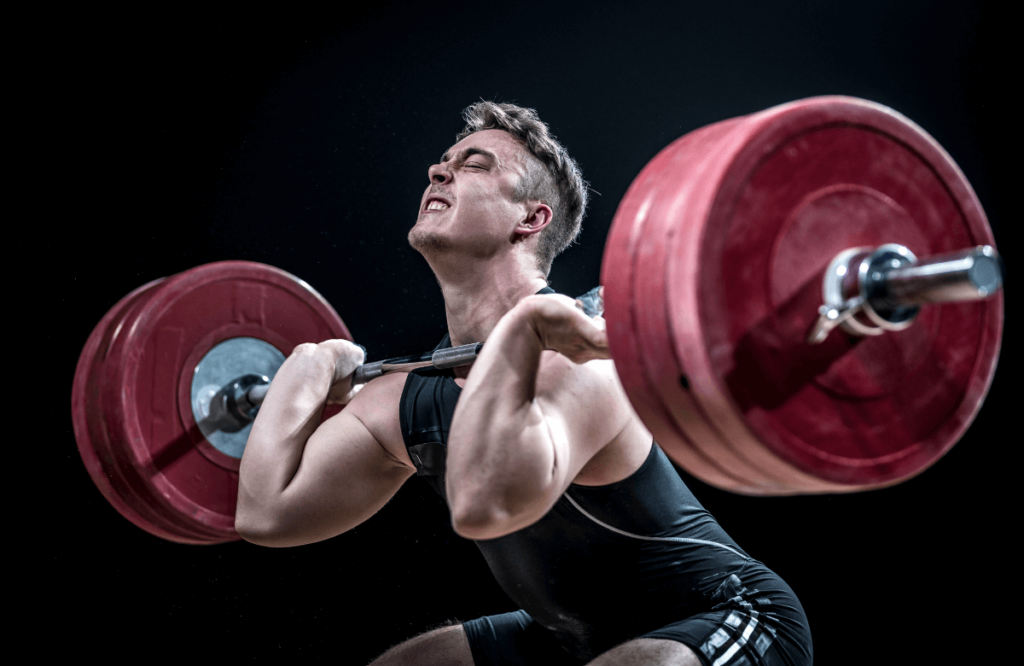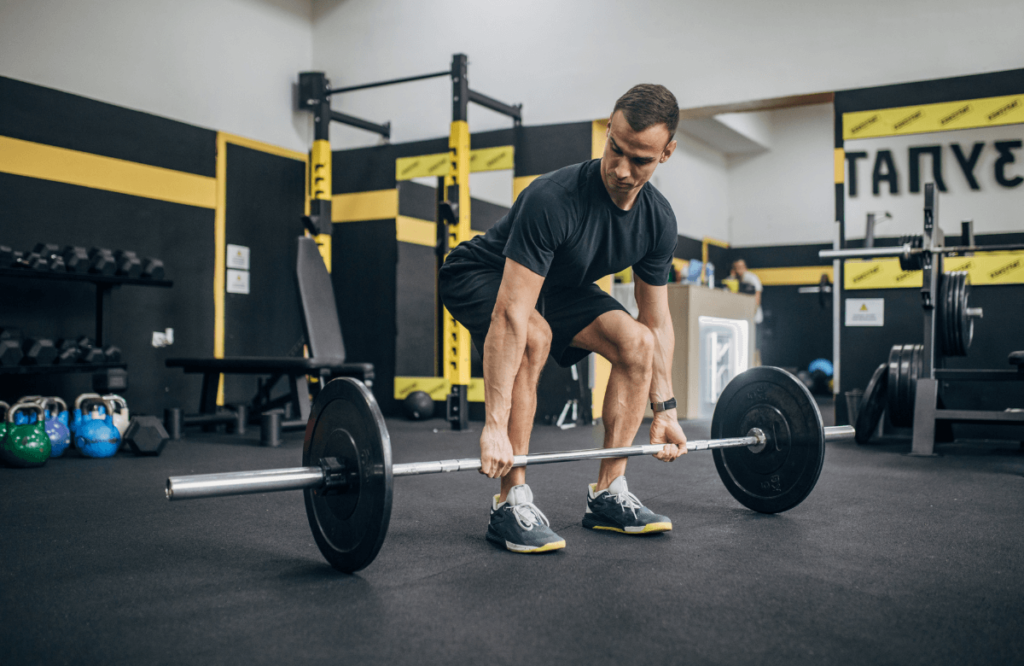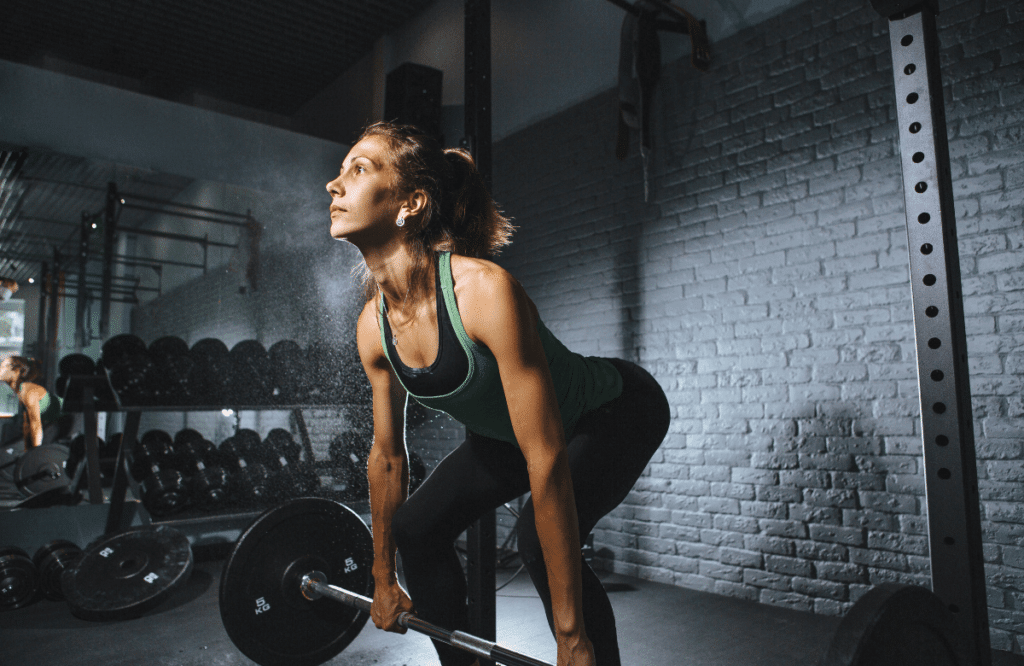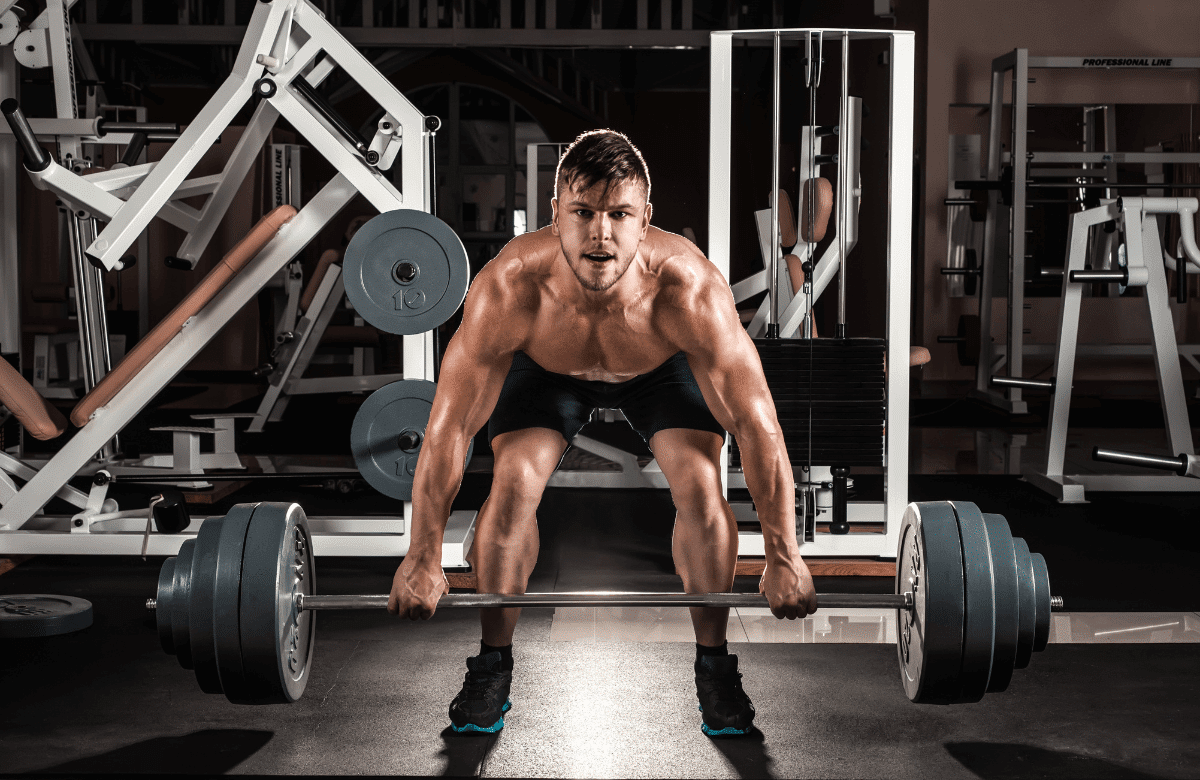Across my many years in fitness, one of the debates that hasn’t seemed to have gone away; should you deadlift on back or leg day of your workout routine?
Some say the deadlift variations are leg exercises and therefore belong in leg workouts. Other people say that a heavy deadlift will tire the legs so should be done on back day.
Both sides have valid points, but what does the science say about the matter? Can we answer this question clearly, settling the debate once and for all? That’s my intention here, so by the end of the article you’ll know whether to program your deadlifts on leg day or not!
Onto the evidence for both…
Jump to:
- Setting the comparison criteria
- Muscle EMG data for deadlifts
- Muscle EMG data for squats
- Knee mechanics and flexion during the back squat and conventional barbell deadlift
- Hip mechanics and flexion during the back squat and conventional barbell deadlift
- Training effects of both
- Deadlift on back or leg day? Closing notes…
Setting the comparison criteria
In order to settle the debate fairly, we need to establish criteria for the comparison of the exercise. We can’t use ‘opinion’ as a metric, because it’s too subjective.
Instead, we’re going to use a combination of electromyography (EMG) data, which provides us with an accurate measure of muscle stimulation. We’ll also use data about knee and hip flexion in the different exercises.
If we can compare the activity of the muscles and the different joint angles, we can find out how much work each body part does in the exercise. With that data, we can determine whether or not deadlifts should be done on back or leg day.
To make the comparison fair, I’m going to only look at the conventional deadlift and the barbell back squat.
There are so many variations of deadlifts (trap bar deadlift, sumo deadlift, Romanian deadlift, stiff leg deadlift etc) and squats (front squats, back squats, split squats, overhead squats etc) that we need to set a fair comparison point for the assessment.
The analysis will be purely based on mechanics, and won’t allow for nuanced technique.
Muscle EMG data for deadlifts

Martin-Fuentes et al assessed EMG data of deadlifts and its variants in a 2020 study. They found that the conventional deadlift trained the following muscles…
Primary conventional deadlift muscles worked:
Their study concluded (as expected) that the balance of muscle recruitment depended on the variation of the deadlift being performed. In the conventional deadlift, the major muscles recruited were the anterior thigh muscles (quads) and the lower back and mid muscles.
Muscle EMG data for squats
A research study titled Evaluation of Muscle Activities During Different Squat Variations Using Electromyography Signals was published in 2020. They assessed the muscle recruitment patterns across 5 different squat variations. There was limited change in the recruitment of the quads, but the glutes, hamstrings, core and spinal erectors varied depending on the squat pattern.
Primary back squat muscles worked
- Quads
- Glutes
- Hamstring
- Spinal erectors
- Core
The interesting point is that the back squat activated the spinal erectors more than the other types of squat. It didn’t activate them as much as the deadlift did in the Martin-Fuentes et al study showed though.
Verdict: Both exercises activate similar muscles, but the deadlifts train the lower back more than squats, and squats train the legs more than deadlifts.

Knee mechanics and flexion during the back squat and conventional barbell deadlift
Next up we need to look at how the knees flex and extend during both exercises. This is important because the muscles that allow the legs to bend and straighten are the quads and hamstrings. The more flexion and extension the knees undergo during a lift, the more emphasis is placed on those primary muscles.
Squats
A full squat requires the legs to go from a position of full knee extension to deep knee flexion. The entire movement is governed by the lower body. The spinal erectors and core muscles work to maintain a good lumbar spine posture.
In a 2020 study by Endo et al titled ‘The relationship between the deep squat movement and the hip, knee and ankle range of motion and muscle strength’, maximal knee flexion for a squat was recorded at 146.5 ± 7.5°. This is important because it shows the rate of work done by the leg muscles to achieve this position.
Deadlifts
The starting position of the deadlift is legs bent, hips down, chest up. The leg muscles initiate the drive, taking the knees from a flexed position to an extended position. At the top of the lot, the hip muscles and glute muscles work together to control the hip thrust to complete the lift.
Kinematic analysis of the deadlift by Schellenberg et al in their 2013 study ‘Kinetic and kinematic differences between deadlifts and good mornings’ showed a maximum knee flexion of 107.8 ± 22.4°.
Verdict: The knee flexion is significantly greater in full depth squats than standard deadlifts. This means more time under tension for the quads when the lifting tempo is the same for both lifts. The barbell squats force the legs to do much more work than the conventional style deadlifts.
Hip mechanics and flexion during the back squat and conventional barbell deadlift
In most lower body compound exercises, when the knees move, the hips do too. Moving through the phases of the deadlift takes us from deep knee flexion through to a standing position.
This lockout position is the point where hip extension is complete.
In their study titled ‘Hip and Knee Kinetics During a Back Squat and Deadlift’, Choe et al gave us a perfect comparison of the movements side by side. Their analysis concluded…
‘Larger hip extensor net joint movement and positive joint work during the deadlift suggest that individuals targeting their hip extensors may yield greater benefit from the deadlift compared with the back-squat. However, larger knee extensor net joint movement and positive joint work during the back-squat suggest that individuals targeting their knee extensor muscles may benefit from incorporating the back-squat compared with the deadlift.’
Verdict: These conclusions adhere to previous findings from other researchers, showing that the hips play a larger role in the deadlift than they do in the squat. This is important when it comes to targeting the lower back in training.

Training effects of both
Both exercises are compound movements that are very effective at building muscular strength, enhancing athletic performance and building muscle.
A standard deadlift is likely to be the strongest lift a person has. Most people can pull more weight from the floor than they can squat or press. It’s why the deadlift is often referred to as the king of exercises. It’s an exercise that trains a lot of muscle mass across the entire body, and is generally considered safe when performed well.
Deadlift sessions can be tweaked with various weights and movement variations, meaning you can spend a whole deadlift workout performing variations of the same exercise.
Squats are the go-to lower body exercise for a large number of lifters. When it comes to muscle gain and strength training for the legs, you can be almost certain that squats will feature heavily in the training regimen. The squat is the most complete compound lift for the legs, because it works the legs through an eccentric phase (leg flexion) and a concentric phase (leg extension).
Squats can also be adapted to suit a range of different training goals and outcomes. Like deadlifts, there are many types of squats, so you can adapt them for different strength training programs.
Verdict: Both the squats and deadlifts are excellent ways to build lower body strength and power. In a 2020 study by Nigro titled ‘A Comparison Between the Squat and the Deadlift for Lower Body Strength and Power Training’, the following conclusions were drawn…
Results indicate that both the squat and the deadlift can result in similar improvement in lower body maximal strength and jump performance and can be successfully included in strength training programs. The incidence of back pain in the deadlift group may suggest a marked stress of this exercise on the lower back.
An interesting point here is the mentioning of stress on the lower back, further indication of the work that area of the body does in the deadlift.

Deadlift on back or leg day? Closing notes…
What we’ve established so far in this article is that both the standard deadlift and the back squat are incredibly effective exercises and can be included in many types of training programs. The question I set out to answer was on which training day do they belong.
In my opinion, the evidence strongly favours that deadlifts belong on BACK DAY, and here’s why…
- Deadlifts recruit the muscles of the mid and lower back very effectively – more effectively than squats. This makes them a better back exercise.
- The hip angles are greater during the deadlift, meaning the trunk activity in the deadlift exercise is higher than in squats.
- Squats allow for a significantly greater degree of knee flexion, therefore are a better, more effective leg exercise than deadlifts.
- Although both exercises use similar muscles, the deadlifts use more of the muscles above the hips, and squats use more of the muscles below the hips.
- There are better ways to train the legs than with deadlifts, but there are very few better ways to train the lower back.
- Fatigue is a factor – you could deadlift on leg day instead of back day, but you’d compromise deadlift performance or squat performance as you tire.
- You can train both lifts with a heavy weight if you put them on separate days, which would maximise strength. Heavy squats and heavy deadlifts are best kept apart.
Having assessed the science across a number of different points – hip and knee joint angles, muscle recruitment and training effects, I believe I can say with some qualified certainty that deadlifts are best kept for back day. It just makes more sense to me.
Deadlifts remain one of the best exercises we have for training the entire body, and as such they may even deserve their own dedicated deadlift days where you could perform many of the common deadlift variations. This would definitely increase your deadlift performance!
Performing deadlifts after squats (or vice versa) would limit the effectiveness of the subsequent exercise. To sum up, based on science and anecdotal experience, I believe you should program deadlifts on back day, not leg day. Better still, give them their own day where you could focus on hitting multiple sets of heavier deadlifts and really get the most from the exercise.














